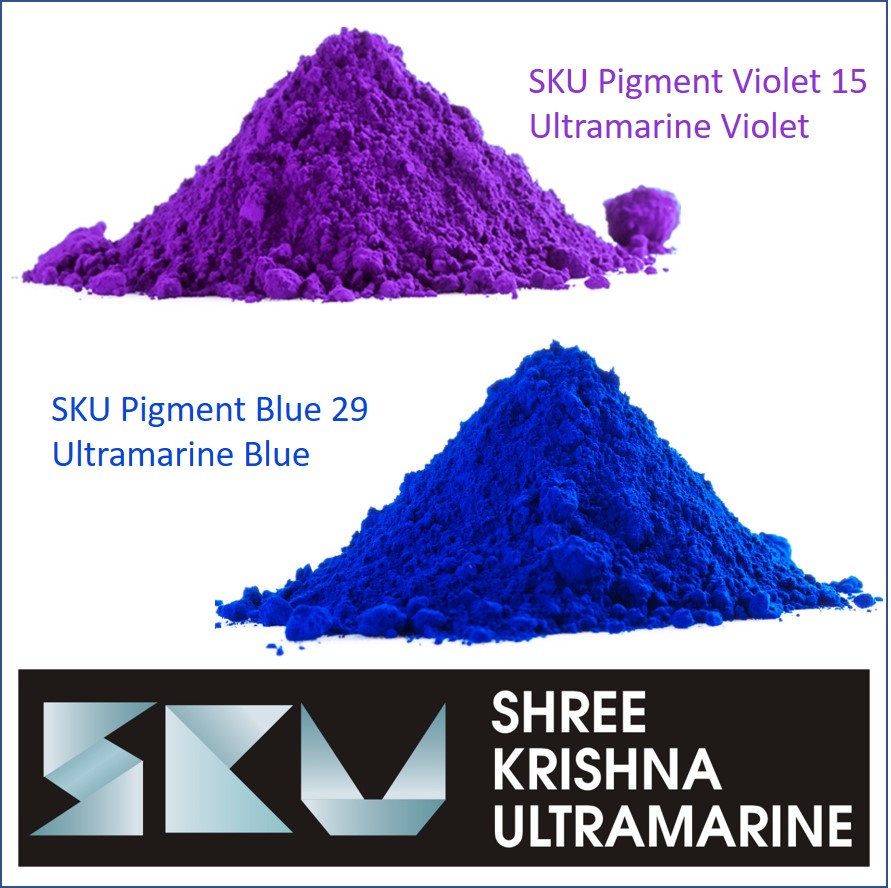Ultramarine Pigments: From Ancient Art to Modern Industry

For thousands of years, color has influenced art, design, and industry. Among the most significant hues, Ultramarine stands out for its timeless brilliance. Today, companies like SKU Pigments specialize in manufacturing high-quality Ultramarine pigments, including Ultramarine Blue, Ultramarine Violet, Pigment Blue 29, and Pigment Violet. From industrial coatings and packaging, Ultramarine has become the backbone of modern blue pigments.
The Journey of Ultramarine Through Time
The name Ultramarine comes from the Latin “ultra mare,” meaning “beyond the sea,” a reference to lapis lazuli originally imported from Afghanistan. For centuries, it was worth more than gold, used by Renaissance masters to paint sacred art. It symbolized wealth and divinity.
Modern chemistry made it possible to manufacture Ultramarine pigments, bringing the once-exclusive shade into mass production. This breakthrough turned a luxury color into a cost-effective solution for countless sectors.
Why Ultramarine Blue Leads the Industry
Ultramarine Blue pigments—the synthetic form of Pigment Blue 29—are the most widely used. Known for their lasting vibrancy, they are sustainable and reliable. They are used in:
• Decorative finishes for durability and brilliance.
• Automotive and packaging industries, thanks to UV resistance.
• Fine printing, where clarity is vital.
• Personal care, given their safety profile.
This balance of economy and brilliance keeps Ultramarine Blue among the top pigments.
Ultramarine Violet and Pigment Violet
Ultramarine Violet offers delicate hues that appeal in cosmetics. Pigment Violet derived from Ultramarine is highly dispersible, making it ideal for eco-friendly materials.
Its sophisticated tone enhances interior design, while ensuring durability without chemical breakdown.
Industrial Uses of Ultramarine Blue
Pigment Blue—particularly Ultramarine Blue pigments—remains a trusted industrial choice. It offers weather resistance for:
• Vehicle coatings with lasting vibrancy.
• Branding, ensuring long-term appeal.
• Decorative plasters, adding beauty and durability.
This wide applicability ensures Pigment Blue’s dominance.
Advantages of Ultramarine Pigments
• Non-Toxic & Safe: Suitable for sensitive products.
• Heat & Light Resistant: Colors don’t fade under UV.
• Eco-Friendly: Manufactured with sustainability.
• Cost-Effective: Affordable vs. natural pigments.
• Versatile: Across paints, plastics, printing, and construction.
Applications Across Sectors
1. Paints & Coatings: Durable architectural shades.
2. Plastics & Rubber: Stable in polymers.
3. Cosmetics: Luxury formulations.
4. Construction: Plaster and decorative finishes.
5. Printing & Inks: Precision printing.
Why Choose SKU Pigments?
SKU Pigments stands among global suppliers, offering reliability in Ultramarine pigments. Their product portfolio includes:
• synthetic Ultramarine for vibrant, bold applications.
• Ultramarine Violet and Pigment Violet for refined finishes.
• Custom shades for specialized markets.
Their reputation is built on consistent quality and sustainable methods.
Final Thoughts on Ultramarine Pigments
From lapis lazuli origins to a global industrial pigment, Ultramarine has remained relevant for centuries. Whether it’s the timeless vibrancy of Ultramarine Blue, the subtle elegance of Ultramarine Violet, or the stability Ultramarine Violet of Pigment Blue 29, Ultramarine pigments remain unrivaled.
With SKU Pigments as a leading manufacturer, industries achieve innovation with color. As demand for sustainable pigments rises, Ultramarine will lead in global markets.
Common Queries About Ultramarine
1. What is Ultramarine?
A blue/violet pigment with historic roots and modern industrial use.
2. What is Pigment Blue 29?
A widely used industrial pigment.
3. Where is Ultramarine Violet used?
In eco-friendly and children’s products.
4. Are Ultramarine pigments safe?
Trusted globally for safety.
5. Why choose SKU Pigments?
Because of quality, eco-focus, and range.